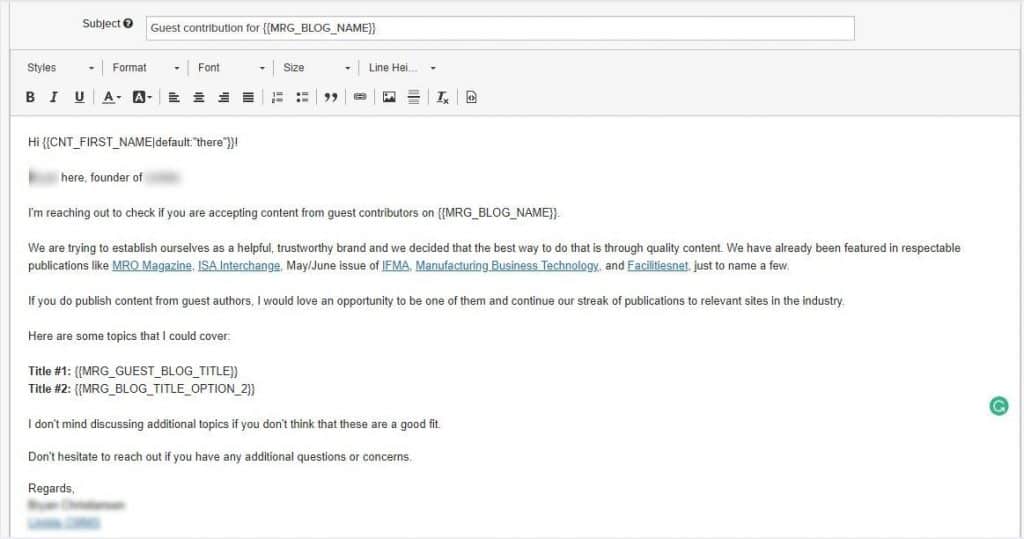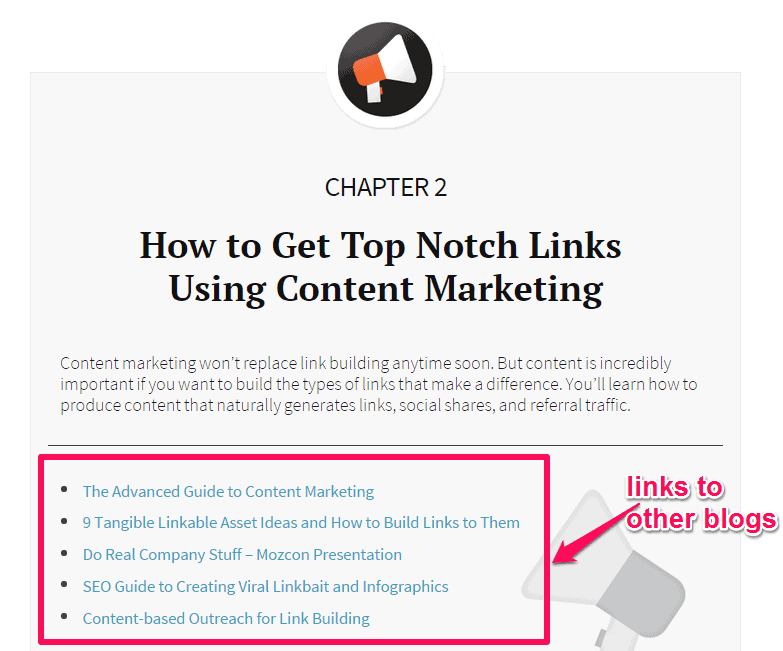
How To Make Guest Blogging Work For You (2020)
How To Make Guest Blogging Work For You (2020) Ashfaq Ahmad February 24, 2020
Share This Post
Share on facebook Share on twitter Share on linkedin Share on pinterest Share on email
Guest blogging is consistently cited as one of the best ways to build high quality backlinks (SEO) and generate more traffic to your blog.
Would you like an uptick in targeted traffic to your blog, higher search engine rankings and a stronger reputation in your niche… for free?
It might sound like a pipe dream (especially if you’ve only recently started your blog), but it’s not. You can accomplish all of these feats surprisingly quickly, and without paying a dime—through guest blogging. Let’s talk about how to guest post.
Table of Contents What is Guest Blogging?
Guest blogging, also called guest posting, is when you write an article for someone else’s blog with the purpose of growing your brand, gaining exposure to a targeted audience, generating traffic and building natural backlinks for your own blog.
Although there are some exceptions, a guest post will normally be a unique piece of content you’ll have to write—one you haven’t already published on your blog or anywhere else—and you’ll almost always be writing for a blog with a larger audience than your own (which is one of the major benefits of guest blogging).
How to Land a Guest Blog Post for SEO and Traffic in 2020
You don’t have to pay to be a guest blogger, either. If you’re asked to pay, then that’s a sponsored post, not a guest post. In fact, some blogs will even pay you for guest blogging on their site.
So what’s the catch when it comes to guest blogging? Well, there isn’t one—and everybody still benefits.
Today, more than 70 million blog posts are published each month. It’s getting increasingly competitive to reach (and retain) a large blog audience.
Thus, guest blogging is a win for the host blog that’s publishing your guest post, because they get a free piece of content that they don’t have to either write themselves or pay a writer to compile.
You get your name, your words and links to your own blog surfaced prominently to potentially thousands or more readers. We’ll talk more about including links in your guest blog posts later on in this guide, because those are extremely valuable in terms of building your blog’s SEO authority.
1. Get Your Guest Blogging Prerequisites Done First
Guest Blogging Prerequisites to Getting Your Guest Post Accepted
Some would-be guest bloggers worry that they need to have a ton of blogging experience or a huge following of their own—before anyone’s going to even consider publishing their posts.
But, that’s simply not true.
Landing a guest blog post on a big website isn’t as difficult as it sounds. Start with this foundation and your pitch will do well.
If you want to get started with guest blogging today and see your work published on someone else’s blog, there are only two crucial prerequisites:
You need to be able to write well. Be honest with yourself here: if you’re not very fluent in English, or if you struggle a lot with spelling and grammar, you may not yet be at the level where you’re ready to dive into guest blogging. If you do want to go ahead, then it’s worth finding a friend who can help out with a bit of editing, or you might even consider paying a professional editor to help polish your work before pitching a guest post.
You need to choose your host blog wisely. This means picking a realistic blog or publication that already takes guest posts. And I know this might sound obvious, but aiming for the very biggest blog or publication in your niche with your very first try, will only let you down and set the wrong expectations when you’re first getting into guest blogging. With this incremental approach, you can also gain valuable experience before you pitch the blog of your dreams.
I’m a living testament to the truth of this approach in steadily growing my own blog over the years.
You don’t need a huge personal brand to succeed at guest blogging
When I first started guest blogging about four years and began to have my work published on other (much higher authority) blogs, I didn’t yet have a personal brand or reputation at all.
What I did have however, was the ability to write a blog post that could tell a compelling story, draw readers in and also serve to help my host blog’s content goals. Having the growing skill of writing that you’re constantly working to improve—and the willingness to be persistent with your outreach efforts—will go a long way in helping your guest blogging campaigns succeed.
On top of that foundational writing ability, I started with pitching startups I’d either already worked with in some capacity through my day job (as a content marketer at CreativeLive) or companies that would at least be familiar with the brand of my employer.
I leveraged the most advantageous tool at my disposal (working for a globally recognized startup) to network my way into guest blogging opportunities at other similar companies.
You may not be in the same position as I was when I started guest blogging—but challenge yourself to use the tools you’ve got, to your advantage.
2. The Way To Find The Perfect Blogs To Guest Post On 
If you Google “blogs that accept guest posts,” you’ll find lots and lots of lists.
But,This isn’t the best way to start guest blogging.
After all, you don’t need 150 random blogs that accept guest posts… you just need one high quality site to start with.
Instead, think about the blogs that you already read that cover the same topic, or a similar one, to what your own blog talks about. These are great blogs to pitch because you’re already very familiar with their style and the types of content that they publish.
When evaluating a blog to pitch for accepting a guest post, you want a site that:
You already have some sort of connection with. Perhaps you’ve commented on the blog before, chatted with the blogger on Twitter or even have a similar blog name to. Starting with some sort of simple connection can make it easier to get your guest post pitch looked at.
Is larger than your own, but not ridiculously huge. Aim for a blog that’s roughly five to ten times the size of your own. If you have 100 email subscribers, aim for a blog with ~1,000. If you’re aiming for blogs (like Forbes) that are more like a thousand or more times the size of your own, that’s a bit too ambitious when you’re brand new to guest blogging.
Is on-topic for you. While you might gain some benefits from writing for a blog about cats when your blog is all about gadgets, there’s not going to be a lot of audience crossover, so you shouldn’t expect to see much of a gain from that time investment.
Has a somewhat similar writing style to yours. It’s fine to modify your style a bit to suit the blog you’re guest posting on, but if you’re normally very “out there” with lots of off-color jokes, and the blog you’re writing for is more conservative, you’ll either find that (a) they reject your post because your style isn’t a good fit or (b) you modify your style to suit them–and readers who click through to your blog come down with a fit of the vapors. Both situations result in a less than desirable outcome.
You’re proud to be associated with. Avoid guest blogging on sites that have been heavily criticized in your niche (unless you want to show your support for them), and avoid blogs that don’t fit with your personal moral or ethical values. If you’re a staunch liberal, for instance, it doesn’t make much sense to write a blog post that’s strongly in favor of a conservative ideology. The content won’t come off as authentic, and you’ll probably regret the decision in the future anyway.
Offers a do-follow link. This is usually the case, but look carefully at the guest blogging guidelines to make sure that your bio link (or in-post links) will be “do-follow” rather than “nofollow” (as a nofollow link won’t do anything to help your blog SEO efforts). If there’s nothing stated either way in the guidelines, check out a past guest blog post, scroll to the bio, right-click on it, and select “Inspect” (in Google Chrome) to see the HTML code for that hyperlinked text snippet. If you see the word “nofollow” within the HTML description of the link, then it’s a nofollow link. If it doesn’t explicitly say the word “nofollow,” then you’re good to go.
3. How to Inspect a Link for DoFollow 
Inspect a link by right-clicking on the hyperlinked text you want to look at—and clicking the “Inspect” option.
This will open up the control panel on the right side (or bottom) of your browser window.
And then you’ll want to take a close look at the highlighted text that describes the nature of the link you’re inspecting.
Again, you’re looking for any mention of the word “nofollow” in the description. So if it’s not mentioned there, then the link is considered “dofollow” which passes SEO benefits to the destination link (i.e. a post you’re promoting on your own blog).
Inspecting Links for NoFollow or DoFollow in Guest Posts
Of course, it’s crucial to first check that your target blog actually accepts guest posts—and if they do, whether or not they allow clickable links back to your own content too.
Different authors cropping up on the blog (bonus points if something like “guest blogger” or “guest post” is used to introduce their work). This doesn’t necessarily mean the blog will be open to unsolicited guest blogging submissions though, so don’t automatically assume the flood gates are open.
A “guest post guidelines” page. In a moment, we’ll take a look at how to find this page, as many bloggers don’t make it particularly prominent.
A note on the Contact or About page about guest blogging. Some bloggers will put a line here about whether they’re open/closed to guest posts at any given point.
Read the guest blogging guidelines before submitting a pitch.
If a blog says they’re not accepting guest posts, don’t expect them to make an exception for you. However amazing your blog post idea is, you’ll want to spend your valuable time elsewhere.
This is also true if a blog says they only take guest posts by invitation—though in that case, you can potentially contact the blogger (if you have an existing relationship with them) and ask if they’d be willing to look at a blog post outline to get a feel for your style, or go through a mutual connection to get an introduction.
4. Come Up With Great Guest Blogging Ideas 
Many new guest bloggers come up with a ton of clever ideas first, then only afterwards look for the right blogs that those ideas might be a good fit for.
In my experience, that’s not the best way to go about guest blogging.
Instead, you want to come up with ideas that are perfect for each and every target blog you’re going to reach out to… not just ideas that are a halfway decent fit for a hundred different blogs. Think bespoke, not off-the-rack.
To come up with a guest blogging idea that’s going to work perfectly for your prospective site, you’ll want to:
Read lots of recent posts on your target blog. If you’re not a regular reader (or if you used to read the blog but haven’t done so recently), you really need to get up to date with the type of content they’ve published recently. If your target blog often writes about web hosting-related topics, then you could pitch them on a guest post that covers a more niche topic like the best cheap web hosting plans, or offering up a review of the top monthly hosting plan options on the market—all of which could ladder up to a bigger piece they already have about the overall best web hosting plans for their readers.
Make notes about these posts. What topics have they covered? How long are the posts, roughly? Do their posts tend to be high-level and strategic, or focused on specific tactics? Are the posts aimed at beginners or people with a lot of experience? All of this can help you hone your ideas appropriately.
Look at the categories the blog covers, if these are listed in their navigation. You might want to pay attention to categories that haven’t had many (or any) posts recently. These could be good targets for content that fills a “gap” on the blog. Keep in mind, though, that a lack of recent posts in a particular category could signal that the blog has changed direction.
Brainstorm a list of ideas. Don’t just come up with one or two blog post ideas… aim for at least ten. Some of them might not be great: that doesn’t matter. You want to keep going till you get an idea that you think would be a perfect fit for that blog.
Only after you’ve met this criteria will you be ready to implement a guest blogging strategy that actually sees you getting published.
5. Find And Follow The Guest Blogging Guidelines 
Most blogs that accept guest posts will have clear guidelines that they ask guest bloggers to follow.
Make sure you look for these… and follow them carefully before submitting your articles for consideration.
You’ll most likely find the guest post guidelines:
Linked to from the blog’s About, Contact or Guest Post submission page
Linked to from the sidebar or the footer of the blog
If they’re not in either of those places, search for “guest post guidelines”, “write for us”, “submit a post”, or “guest posting” on the site. To do this site search, you can type the phrase plus site:[nameoftargetblog.com] into Google, e.g. “guest post guidelines site:ryrob.com” and get more accurate results.
Guest post guidelines vary from blog to blog, but most will cover:
The type of content they do/don’t accept. This will often be common sense (e.g. they don’t want plagiarized content or posts you’ve already published somewhere else), but the guidelines may also cover the topics they’re particularly interested in, or topics that they don’t want right now.
Whether they want you to send them an idea and outline, or a full draft. It’s best to stick to what the blog asks for here (though most won’t reject you just because you sent the wrong thing).
Who to send your pitch (or draft) to. This may be an editor, assistant or even a submission form rather than the blog owner.
How to format and send your guest post. Some blogs like a Word document, others will want a Google doc, and a few still ask for raw HTML (though this is becoming increasingly rare). You may be given instructions on how to use headings.
Successful guest blogging requires following instructions
There may also be other instructions (i.e. some blogs will ask you to submit your guest post using a specific form, or to use a specific subject line for your email to them).
Make sure you follow these guidelines, as failing to do so could mean your pitch never even gets seen.
If you’re struggling to find guest post guidelines, or if the guidelines don’t make it clear who to contact, I’ve got some actionable tips in this guide to blogger outreach about tracking down the right person to contact (and finding their email address).
6. Learn How To Pitch Your Guest Blog Post 
Some blogs are happy to be contacted with a full draft of your guest blog post, but many want you to “pitch” the idea first. That’s where smart blogger outreach comes into play.
This normally means writing them an email where you briefly introduce yourself and your credentials, share your suggested guest blogging idea or prepared title, and outline what your post will be about.
7. Ensure Relevancy Between Your Blog and Your Target Blog
Once you’ve developed the blog the next plan is to have guest post on, the next step is to establish the relevancy between your blog and that blog.
If a blog has got millions of readers does not mean you’ll be able to get their readers to actually pay attention to you; if you run a marketing blog and decide to guest post on a sports blog, you will get little results no matter how big that sports blog is.
If you’re also guest blogging for a completely unrelated blog, you can increase your chances of the success by linking the topic of your host blog and the topic of your blog.
For example, as someone who owns a blog, if I wanted to write a guest post for an android blog, even though the blog is completely unrelated to my blog, I can still ensure guest blogging success by writing an article titled “20 Writing Apps for Android Users.”
This way, a segment of the blog’s readers who are writers, or who are interested in writing, will like my article and I can get some of them to visit my blog.
Usually, it’s best to only guest post on blogs that are related to yours but, in case you have an opportunity to guest post on a bigger blog, make sure there’s relevancy between the topic of the blog and the topic of your blog.
8. Make Resource Articles a Priority 
Of recent, I’ve gotten the most results from my guest posts that were resources. I’m not surprised, because I’ve had great experience with resource content on my blogs as well.
The average resource article on my blog can get up to 10,000% more views compared to the average article on my blog, so I wasn’t surprised to see resource articles perform really well as guest posts.
Resources work because they give people reading your article the solution they need instead of tips. As a result, they get more shares, links, and traffic. Here are good examples of resources in different niches.
Here are signs that your content is a good resource:
Instead of giving people tips, a resource gives them resources that makes it instantly possible to implement those tipsA good resource is very specific. It focuses on providing solution to just one problemIt gives people a lot of options. The more options the better; a resource that features 30 items is usually preferred to a resource that features 2 or 3 items. On my blogs, resources that include a lot of options usually get more shares than resources that include fewer options
To ensure that more people like and share your resource, it also helps to include additional information that can help people decide on which of your resource is best for them. Don’t just give them a list. Give them information that makes it easy for them to decide what to do with your list.
Subscribe To Our Newsletter
Get subscribe for freebies, tools, and blogging tips. Unsubscribe anytime.
Email SUBSCRIBE PrevPreviousHow To Get 100% GTMetrix, Google Page Speed Score NextInfinity Review: A Flexible Project Management PlatformNext
More To Explore
Best Online SEO Courses in 2020
Share This Post Share on facebook Share on twitter Share on linkedin Share on pinterest Share on email Are you
Infinity Review: A Flexible Project Management Platform
Share This Post Share on facebook Share on twitter Share on linkedin Share on pinterest Share on email A project
 Ashfaq Ahmad March 1, 2020
Ashfaq Ahmad March 1, 2020 
Read more: bloggeroundup.com
